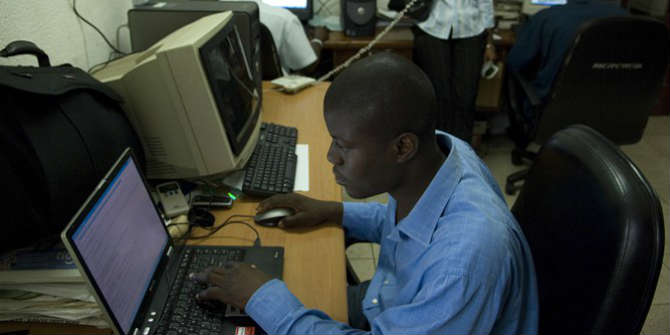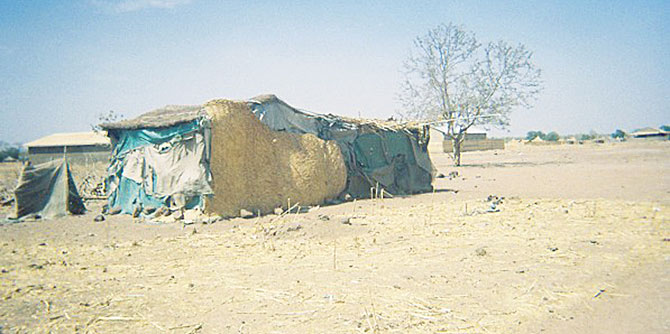As European leaders grapple with potential solutions to the arrival of huge numbers of refugees arriving from Syria and other countries, Lucy Hovil shares useful lessons from the Great Lakes region of Africa.
This post is part of our series African Perspectives on Migration looking at the theme of Intra-Africa migration.
Perspective is a strange thing. For many in Europe the full extent of the global refugee crisis only hit the radar when significant numbers of Syrian refugees arrived on its doorstep. And now with its newfound focus on refugees, there is much talk about ‘solutions’, most of which seem to be about finding new (or rediscovering old) approaches to discouraging movement into Europe.
Meanwhile in Africa’s Great Lakes region, as well as in much of the global South, populations have struggled with hosting millions of refugees for many years, and there is much to learn from their decades-long experience of hosting refugees. In particular, since the upheaval of populations following the 1994 genocide in Rwanda and its aftermath, when more than two million people fled to neighbouring countries in one of the fastest mass exoduses in history, the Great Lakes region has been forced to deal with persistent high levels of displacement. And with new outflows ongoing from Burundi and South Sudan, the problem looks unlikely to be resolved any time soon.

Credit: European Commission DG ECHo via Flickr (http://bit.ly/YLFCGl) CC BY-NC-ND 2.0
Perhaps one of the greatest lessons that has been learned in the region is that any approach to ending displacement needs to go a long way beyond the two dominant ‘solutions’ that have been on offer: first, putting refugees into camps and limiting their freedom of movement; and second, pushing for repatriation at the first hint that the situation back ‘home’ is just about stable enough. This stunted approach to responding to forced migrants might go some way to limit the situation and give the appearance of being under control, but in reality it is often as much part of the problem as the solution. It fails to recognise and address factors that push individuals to flee, and instead means that displacement emergencies fluctuate but remain largely unresolved.
The current situation in Burundi is a case in point. The escalation of political unrest following the announcement on 23 April 2015 by President Nkurunziza that he would run for a third term in office has led to over 200,000 refugees fleeing their homes and 79,200 becoming internally displaced. This crisis is part of a broader pattern of conflict and displacement in which the drivers of displacement that led to previous rounds of exile – whether as a result of genocide in 1972 or the decade-long civil war in the 1990s – have not been sufficiently addressed. This latest round of displacement is but the continuation of events that are deeply embedded in Burundi’s post-colonial history. It is no coincidence, therefore, that many of those fleeing are from the southern part of Burundi, which sent large numbers into exile in the previous rounds of conflict in the 1970s and 1990s and to which significant numbers had returned since 2005. Failure to adequately support the return and reintegration of those who previously fled has contributed to this re-emerging crisis.
So what needs to change? While some in the West tend to assume that this is the result of mere chaos, a deeper understanding of the situation in the region shows that it is actually a reflection of the collective failure to resolve drivers of conflict that continually re-emerge to create new rounds of flight. The huge humanitarian investment in maintaining expensive refugee camps and the political investment in pushing for repatriation has not been matched by sufficient engagement with underlying dynamics that created displacement in the first place – dynamics that are further exacerbated by the marginalisation of those in exile.
A series of nine case studies on displaced groups across the Great Lakes region has found that exclusion is among the most important features producing conflict in the region. If the majority are marginalised by the few who are in power, it generates a perpetual supply of discrimination that yields the broader context in which the impetus for armed conflict builds. Within this paradigm, people have been violently forced from their homes on the basis of their membership in (or perceived loyalty to) a particular group or as a result of their presence in a specific territory – or both. Unfortunately, many of the same processes of exclusion that have driven people away from their homes are then replicated in supposed places of refuge, which means that many flee their homes only to find further marginalisation rather than sanctuary. In exile, they often face continuing exclusion, denied both integration and/or the opportunity to formally complete that integration process through naturalising as citizens. As a result, those who have found themselves in protracted situations have been left semi-permanently on the margins by governments that have been reluctant to offer citizenship.
And now a similar dynamic is playing out in Europe. It may be tempting, from a European perspective, to hope for a solution that freezes such crises which, up until now, have been largely confined to other parts of the world. And European efforts to make deals on controlling migration flows with Turkey suggest that this approach is currying favour with policy makers. However, this is short sighted for at least two reasons. First, it assumes that the crisis is containable, which experience has shown to be a deeply flawed assumption. And second, it disregards the reality that displacement is just one of the undesirable symptoms of exclusion.
Whether as a driver of conflict or as an ongoing condition of exile, therefore, the extent to which exclusion continues to dominate the lives of so many is cause for concern. Where people are marginalised they can grow disillusioned and desperate and in these conditions extremism can easily take root. So it makes little sense to focus on the symptoms, the displacement and the extremism, without tackling the causes. Until forms of exclusion that lie at the heart of much conflict today are addressed, we will see more conflicts, more refugees and more violent extremism. What we need, therefore, is a comprehensive set of policy responses intended to deliberately promote inclusion – a response that emanates from a “war on marginalisation” rather than an approach that pushes people ever further out onto the margins.
Lucy Hovil is a senior researcher at the International Refugee Rights Initiative and managing editor of the International Journal of Transitional Justice.
Read more articles from our series, African Perspectives on Migration.
The views expressed in this post are those of the authors and in no way reflect those of the Africa at LSE blog or the London School of Economics and Political Science.





